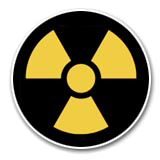I have a truly ridiculous amount of history books on my shelf that I haven’t managed to get around to reading yet. To be fair, I also have a ridiculous amount of books. I’m told this is a common affliction and that I don’t need to worry about it being serious. However, I want to get that “not read yet” shelf down to a more manageable size. So I’m setting myself a goal- one book a month. Each month I’ll read one of my unread books and write up a review here about said book. Should be easy enough, right? Any links to the books are affiliate links, and I’ll receive a small payment for any books you purchase through the links.
Atoms and Ashes: A Global History of Nuclear Disasters.

June’s book was Atoms and Ashes: A Global History of Nuclear Disasters by Serhii Plokhy. As it says right in the title, Serhii Plokhy takes a close look at six of the world’s largest nuclear disasters. Plokhy is an extraordinary author. He’s well established as a historian. Currently, he is a professor of Ukrainian history at Harvard, where he also serves as director of the Harvard Ukrainian Research Institute. This isn’t his first time looking at nuclear disasters either. He’s written at least two other manuscripts about nuclear history. Plokhy is one of the gifted historians who can not only research, but write his findings in such a way that the public reads and enjoys his writing. I know I thoroughly enjoyed Atoms and Ashes, and I’m certainly going to purchase more of Plokhy’s works.
The Disasters
Plokhy separates his books by diaster. There are six that are examined. They are The Castle Bravo disaster, Kyshtym, Windscale, Three Mile Island, Chornobyl, and Fukushima. Personally, I was amazed at the depth of research Plokhy was able to pack into each section. Plokhy was able to maintain this level of research even for the Soviet-era disasters. This is despite the Soviet penchant for secrecy regarding the nuclear programs.
Plokhy does a deep dive into the history of each disaster. Not just the actual event, but the history of the area, facility, personnel, etc. He touches on political, societal, cultural, and historical influences that may have contributed to the events. This does make for a long read, but Plokhy is able to tie it all together in a way that’s easy to understand and digest. He doesn’t shy away from the human element, either. In some cases, he shows exactly what the people on the scene were seeing, hearing and feeling. With the Three Mile Island section, the confusion and terror felt by those in the surrounding area were made extremely clear. In the last section, on the Fukushima disaster, you could tangibly feel the helplessness and frustration of the Prime Minister and his team, as well as the utter terror and resolve of those at the plant.

Digital Globe, CC BY-SA 3.0 https://creativecommons.org/licenses/by-sa/3.0, via Wikimedia Commons
The Science
I’ve noticed a bit of a trend in some scientific history manuscripts where the authors shy away a bit from the science. Plokhy happily avoids this. It’s easy to tell that he has a solid grasp of nuclear mechanics. Thankfully, he also realizes that most people do not have a good grasp of nuclear mechanics. He weaves the science into the history, explaining as he goes along what went wrong and why. He compares reactor types, fuel and coolant considerations, and much more. I’ve never had a great understanding of physics and chemistry, but Plohky manages to make it easy enough that the non-science types will realize not just what happened, but how dangerous it could have been.
In the Prologue, Plokhy goes over the various measurements used to measure radiation. The one thing I would change is the measure systems Plokhy uses. He uses the measurement systems used at the time of each event, rather than standardizing the units across the book. I kept having to flip back to the Prologue to check the measurements.
The Politics
Nuclear power is fundamentally a political issue. There are those who are for nuclear power as a green solution to climate change. There are those that are against nuclear power because of the danger. Plokhy tries, and mainly succeeds in keeping his opinions and current politics to the prologue and closing. He does seem to be against nuclear power, and after reading about the various problems and events, I’m inclined to agree.
The one common thread in every disaster is the human element. In many of the disasters, the systems worked exactly as designed- but due to human error or misunderstanding, the reactions went critical. Its these human errors that are the most terrifying part of the book. The best systems in the world were unable to prevent some of the worst disasters possible. Undertraining, greed, corners cut due to budgets, and incompetent operators are perhaps the true horror Plokhy points out. Radiation is a common fear, as is the possible explosive power of a plant in the middle of a meltdown. But the human element that can never be completely erased from any scenario, is the actual terror hiding behind each of the disasters.
My Recommendation
If it isn’t clear from the abundant praise above, I highly recommend this book. I would not recommend this book for those who are sensitive to disaster scenarios or have a phobia of radiation/nuclear. This was an intense but enjoyable read. Not really beach book material, but perhaps a long weekend read.
Want a copy? Check out the book on Amazon! Link below not showing up? Click here!
Want some more Horrifying History?
Check out our article on the Birthing Spinner! Women everywhere are quite glad that this birthing technique never caught on….

One thought on “Atoms and Ashes: A Global History of Nuclear Disasters”